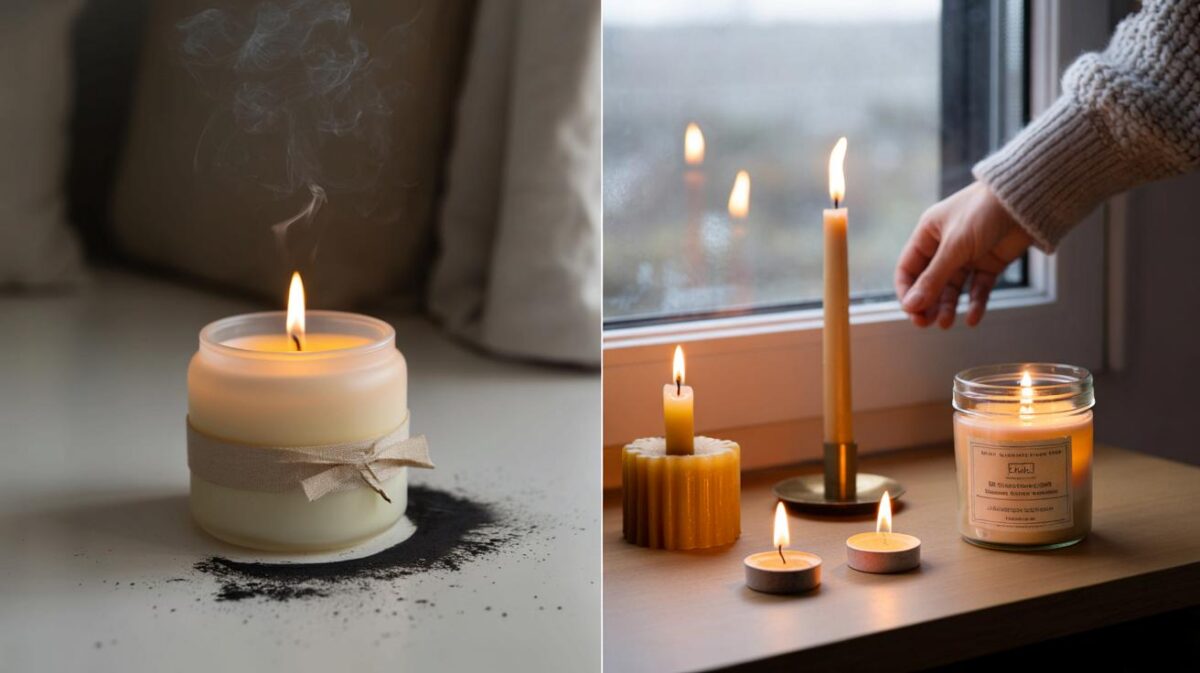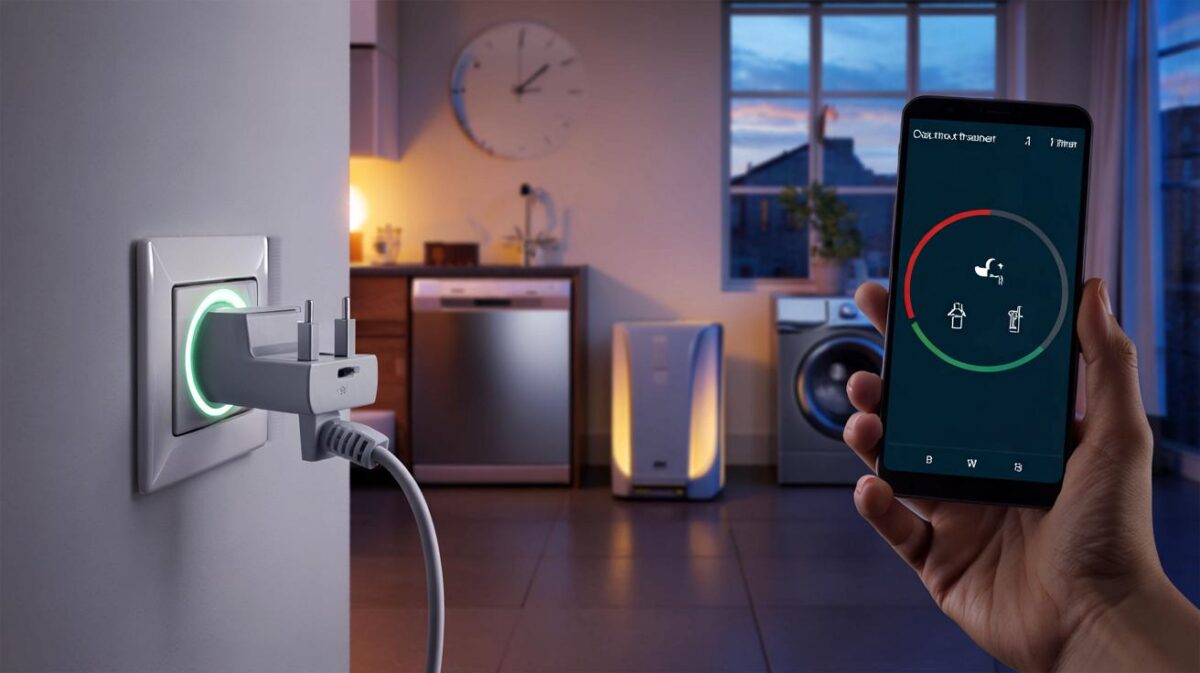A quiet trick beats the loudest alarm: make your home look alive when you’re away. Experts who study burglars say a simple, cheap smart-light routine — the kind that flicks on lamps at believable times — scares off intruders earlier and more reliably than high-decibel sirens that only scream after a break-in starts.
One terrace stood out for being too still. No light. No movement. Just a black rectangle on a row of lived-in windows. A man in a hood hovered by the gate, then stepped back as the house next door blinked on a hallway lamp, then a bedroom, as if someone had just climbed the stairs. He melted away, swallowed by the rain. The siren across the road never had to prove a thing.
The deterrent burglars notice first
Criminologists and former offenders say it plainly: burglars don’t fear gadgets, they fear people. They scan for life. A kettle glow in the kitchen. A TV flicker on a landing wall. A light clicking off at 11:38pm, not 11:00pm on the dot. Cheap smart bulbs and plugs now do this almost too well, randomising lights so your home looks like it’s breathing, even when you’re on a beach in October.
Take the well-cited survey from the University of North Carolina at Charlotte, which asked hundreds of burglars what put them off a target. Visible alarms and cameras mattered, yes. But signs of occupancy — a car in the drive, lights and voices — ranked as the strongest early deterrents. UK crime prevention officers and the police-backed Secured by Design say the same in plain English: make a house look busy, not booby-trapped. **Burglars fear people, not gadgets.**
There’s a simple logic. Sirens are reactive. They shout after a door is forced or a window is jimmied, and by then your lock is broken, your dog is scared, and your evening is ruined. Presence simulation works in the only moment that really counts — before the intruder commits. It nudges them to keep walking. Smart lighting is also silent, discreet and cheap, which is exactly why it flies under the bragging radar and quietly does its job.
Set it up in 10 minutes
Start with one smart plug or bulb in a room that faces the street — a warm lamp in the lounge or hall. In the app (Alexa, Google Home, Apple Home, Philips Hue, TP-Link, you name it), create an “Away” or “Vacation” routine. Pick sunset as your anchor, add a 30–60 minute random offset, and include a second lamp upstairs that switches on later, then off again. The trick is small changes that feel human. A glow here, a click there, never too perfect.
Layer once you trust it. Add a TV-simulator light in a bedroom for an hour after dusk. Let a smart speaker murmur a radio station in the kitchen at breakfast time. Rotate rooms through the week. Keep brightness low and warm — 40% in lamps, not main ceiling lights at 100%. Don’t set rigid times like a train timetable. Let the algorithm be messy. Soyons honnêtes : personne ne fait vraiment ça tous les jours.
Randomised light is the cheapest, quietest deterrent you can buy.
“When a house looks lived-in, I’d give it a miss,” a former burglar told me during a community safety walkabout. “You don’t argue with a kettle just boiled.”
- Pick two rooms that make sense: hall or lounge early, bedroom later.
- Anchor to sunset, add randomised delays, avoid perfect schedules.
- Use warm light, modest brightness, lamps over ceiling spots.
- Mix in a TV-simulator or radio for short windows, not all night.
- Change the pattern weekly, especially for longer trips.
Common missteps and simple fixes
Many people go too bright, too long, too obvious. A blazing living room until 3am, every night, reads like a stage set. So does a light that snaps on at exactly 19:00, seven days straight. Go for variation in start times, room order and duration. Keep curtains in their usual positions. Put a coat on a chair. Leave a book on the armrest. *You sleep easier when the house looks alive.*
Then there’s the “tech but no context” mistake — lights on but bins still inside, or post bulging behind the door. Ask a neighbour to slide mail away from the mat. Use a letterbox guard if the hallway lamp is visible. If you have a smart doorbell, answer when you can and say you’re in the back or on a call, then carry on. Don’t overshare. Don’t name your routine “Holiday Mode.” Let it look and feel casual.
The cost case is clear. A decent siren-based alarm with monitoring can run hundreds upfront and monthly fees on top. A pair of smart bulbs or plugs? £20–£40, and they keep working quietly for years. **Let your home look a little messy, a little lived-in.** That human texture — an irregular glow at the landing, a soft lamp over the hallway shoe rack — is the thing that turns a risk-taker into a walker-by.
Why it works — and why we resist doing it
We’ve all had that moment where a house on our street feels eerie for being too tidy, too dark, too still. Burglars notice it faster because they’re looking for it. Presence-mimicking light scratches at a deeper instinct: the sense that someone might step into the frame at any second. Alarms appeal to our love of big solutions, but burglars operate in small calculations. They pick the home that looks easiest, not the one with the biggest sticker on the gate.
There’s also a human pride in buying the heavy kit. The box on the wall. The keypad glow. It feels protective, like a winter coat. Use it by all means. But don’t skip the cheap layer that shapes behaviour before it starts. The first deterrent is the feeling that you’ll get caught halfway through a window latch. And that feeling comes from a slow march of ordinary light.
Here’s the quiet irony. The best smart home security feature asks you to think more human, not more high-tech. One lamp. One upstairs light. A few believable changes in the evening rhythm. You don’t need 12 cameras and a dashboard that looks like an airport. You need a home that looks like it’s waiting up for you, even when it isn’t.
There’s a conversation to be had on your street about this. Compare routines with neighbours. Share bulbs when someone’s away. Swap tips so your row glows with the same ordinary warmth that made that man in a hood back off on a rainy Tuesday. No drama. No siren. Just the quiet suggestion that someone is about to put the kettle on.
| Key points | Detail | Reader Interest |
|---|---|---|
| Presence-mimicking lights deter earlier | Randomised routines make a home look occupied at target selection time | Actionable, cheap, immediate confidence boost |
| Set-up is quick and low-cost | One or two smart bulbs/plugs, sunset anchor, random offsets | Minimal faff, no subscription |
| Avoid obvious patterns | Vary rooms, timings, brightness; add short TV/radio windows | Human-like detail that feels real, not staged |
FAQ :
- What’s the cheapest way to start?Buy a single smart plug for a lamp in a visible room and create an Away routine with randomised timing around sunset.
- Do I still need a traditional alarm?It helps for insurance and post-entry response. Presence lighting targets the earlier decision moment. Together, they’re stronger.
- Won’t neighbours hate flashing lights?Use warm, low brightness and short windows. You’re aiming for lived-in, not disco. Keep lights off after your normal bedtime.
- Are TV simulators worth it?Yes in small doses. A 45–90 minute window a few evenings a week adds believable movement without the noise of a real TV.
- What about privacy and data?Choose reputable brands, update firmware, use two-factor authentication and avoid sharing presence data with third-party “services.” Keep it simple.








